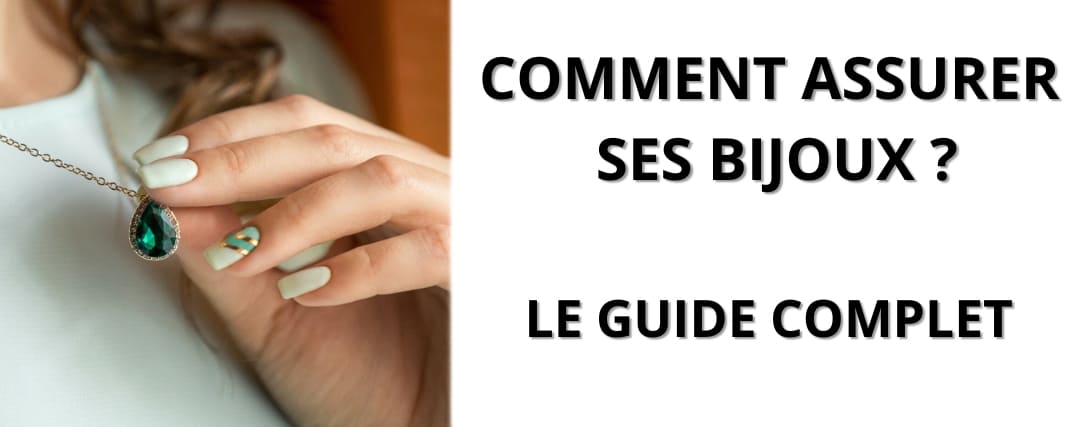Imagine a scenario where your precious ring that was given to you goes missing or gets stolen. The impact of such a loss goes beyond the emotional shock. There is a significant financial cost to consider. The cost of replacing these uninsured parts often exceeds the cost of a decent insurance policy, and without adequate protection, you could find yourself digging deep into your pockets to restore what was lost.
This article aims to shed light on the ins and outs of jewelry insurance, explaining why you need it, how it works, how to choose the right insurance policy, and how to make a claim should the unthinkable happen. After reading this guide answering the question: "how to insure your jewelry?", you'll have the knowledge you need to protect your most valuable assets, no matter what.
What is jewelry insurance?
At its core, jewelry insurance is a safety net, a protective shield that provides coverage for your jewelry in the event of loss, theft or damage. Whether it's a sparkling diamond ring, a set of precious pearls, or a gold bracelet that has sentimental value, insuring these pieces provides valuable peace of mind.
Jewelry insurance policies can be considered specialized types of insurance designed to meet the unique needs of jewelry owners. These policies typically come in two forms: standalone policies and extensions (also called riders or floaters) to your homeowners or renters insurance.
A standalone insurance policy, as the name suggests, is dedicated solely to your jewelry. This is a standalone insurance contract that covers specific parts, usually offering a wider range of protection than a standard home insurance policy.
On the other hand, an extension of your home or tenant insurance aims to improve existing coverage. Most standard policies can cover jewelry, but only up to a certain limit and often not for all potential risks. An extension or endorsement increases this coverage limit and generally covers more situations, ensuring that your valuable items are fully protected.
Understanding these types of insurance is the first step. Next, let's take a closer look at why you need jewelry insurance and how it works.
Why do you need jewelry insurance?
Jewelry often has significant financial and sentimental value. From your first diamond ring, passed down through generations, to the luxury watch you splurged on after your first big promotion, every piece tells a story. Losing, theft or damage to these parts can be emotionally distressing and, without the right insurance, financially difficult as well. This is where jewelry insurance comes in.
Risk mitigation
The first and most obvious reason to insure your jewelry is risk mitigation. Unforeseen circumstances such as theft, loss or damage may occur at any time. Having insurance acts as a safety net, ensuring that you are covered financially if these unfortunate events occur.
Cost Consideration
The cost of replacing expensive parts can be quite significant. In many cases, the annual cost of insuring your jewelry is only a small fraction of its total value. Therefore, insurance is a cost-effective way to protect yourself from the financial burden of replacing your jewelry.
Peace of mind
Jewelry insurance provides peace of mind. Knowing that your precious pieces are insured allows you to wear and enjoy them with complete peace of mind. Whether you're going about your daily routine or traveling somewhere new, you can relax knowing your jewelry is protected.
Jewelry insurance isn't just a luxury, it's a necessity. It protects you from the financial and emotional repercussions of unforeseen events, ensuring that your favorite pieces can be repaired or replaced. Now, let's take a closer look at how it works, so you can make an informed decision about protecting your precious ornaments.
How does jewelry insurance work?
At its core, jewelry insurance works like any other insurance policy: it provides coverage for specific risks in exchange for a regular premium.
Take out jewelry insurance
Insuring your jewelry begins with a visit to a professional appraiser. An appraisal determines the market value of your jewelry, which is crucial in establishing the level of coverage you need and the cost of your insurance premium. Most insurers require a detailed appraisal including description of the piece, gemstone grades, metal content and an estimated replacement value.
Once you have your assessment, you can approach an insurance company to start the process. They will review the appraisal, ask where and how the jewelry is stored and used, and then provide a quote for the insurance policy.
What jewelry insurance covers
Jewelry insurance coverage can be quite comprehensive, protecting against:
- Theft: Probably the most common risk, insurance policies generally cover the theft of the insured jewelry. If you accidentally lose your insured jewelry, your insurance may cover it.
- Damage: Jewelry, especially delicate pieces, can become damaged over time or due to accidents. Insurance can help cover the cost of repairs.
- Disappearance: Some insurance policies even cover unexplained losses, sometimes called “mysterious disappearances.”
What jewelry insurance does not cover
Although jewelry insurance can provide broad coverage, it is important to note that it does not cover everything:
- Normal wear and tear: Jewelry damaged due to regular or excessive wear may not be covered.
- Undocumented Items: If a piece of jewelry has not been officially appraised, it is likely that it will not be covered by your insurance policy.
Every insurance policy has its terms and conditions, so it is essential to understand them before signing. Now that we know how jewelry insurance works, let's look at how to choose the right insurance policy for your jewelry.
Choosing the right jewelry insurance
Choosing the right jewelry insurance requires careful consideration, a little research, and an understanding of your needs. Given the diversity of options available on the French market, it is essential to consider several factors to ensure you make the most informed choice.
The cover
The most important aspect to consider is the coverage provided. Make sure the insurance policy covers the most common risks like theft, loss and damage. Some providers might even cover up the “mysterious disappearance.” Understand the terms and conditions in detail to know exactly what you are protected against.
The cost
Insurance premiums can vary significantly depending on the value of your jewelry, the level of cover and other factors such as where you live in France. The cost of your insurance should ideally be a small percentage of the total value of your insured jewelry.
The reputation of the supplier
A trustworthy and reliable insurance provider is essential. Look at customer reviews and ratings, their claim settlement rates, and their reputation in the market.
Comparison
Compare different insurance policies and providers. There are several comparison tools available online that can help you understand the differences in cost, coverage and duration between different options.
Homeowners or Renters Insurance vs. Standalone Policy
Determine whether adding an extension to your homeowners or renters insurance or getting a standalone policy would be best for you. The first may be suitable if you have few jewels or if their total value is low. But if your collection is large or you hold some gems, a standalone policy may offer more comprehensive protection.
Special conditions
Determine whether the insurer has any special conditions on coverage, such as requirements to store jewelry in a safe when not in use or restrictions on traveling with your jewelry.
Choosing the right jewelry insurance can seem like a daunting task, but with the right approach and careful consideration, you can ensure the best protection for your precious jewelry. Now let's move on to the step-by-step guide on how to insure your jewelry in France.
Where to insure your jewelry in France?
France is home to a variety of insurance providers offering different types of jewelry insurance policies to meet your specific needs. Here are some options:
Home Insurance Providers
Many home insurers in France also offer cover for personal effects, including jewelry. You may choose to add a special endorsement, called an “extension” or “endorsement,” to your existing home insurance policy. Some popular home insurance providers like AXA, Allianz and MAIF may offer this service.
Insurance companies specializing in jewelry
These are insurance providers that focus solely or primarily on insuring jewelry and other valuables. They often offer more comprehensive coverage and personalized service than a standard home insurance policy. A well-known provider in this category is TH March.
Jewelry retailers
Some jewelers or jewelry retailers offer insurance policies, either independently or in partnership with an insurer. These policies are often available at point of sale. This type of option can be offered by renowned French jewelers like Cartier and Van Cleef & Arpels.
Online insurance platforms
Online platforms have made obtaining jewelry insurance easier than ever. They allow you to compare quotes from different insurers, take out a policy and manage your cover, all from the comfort of your home. There are, for example, LeLynx and LesFurets.
Choosing where to insure your jewelry in France will largely depend on your specific needs and circumstances. Consider factors like the total value of your jewelry, how often you wear it, and the level of coverage you want.
Remember, no matter where you choose to insure your jewelry, always research the provider and policy terms thoroughly to ensure you get the best possible coverage for your precious items. Protecting your jewelry means protecting your investment and, more importantly, the memories attached to it.
How to insure your jewelry?
The process of insuring your jewelry can be broken down into six steps:
1) Detail your jewelry
Start by making a list of jewelry you want to insure. For each piece, note its description, estimated value, and any other relevant information such as date of purchase or inheritance.
2) Have your jewelry appraised
Next, take your pieces to a professional jewelry appraiser. The appraiser will examine each item and provide a detailed report including a description of the piece, quality and carat weight of all gemstones, metal type and weight, and an estimated replacement value. This step is crucial, as most insurance companies will base your coverage on this appraised value.
3) Choose an insurance provider
Armed with your assessment, you are now ready to select an insurance provider. As mentioned earlier, consider the coverage, cost, and reputation of the provider. You can also check if they specialize in jewelry insurance.
4) Ask for coverage
Once you've chosen your provider, it's time to apply for coverage. The insurance company will need to see your appraisal report and may ask you additional questions about where and how the jewelry is stored and used. They can also inquire about existing security measures such as safes or alarm systems in your home.
5) Review the insurance policy details
Once your application is approved, you will receive an insurance policy document. Be sure to read it carefully. Check that all details are correct and that the coverage is as expected. If something is unclear, do not hesitate to ask your insurer for clarification.
6) Pay your premium
Once you are satisfied with the policy details, you will need to pay your premium to activate the cover. Premiums can generally be paid annually, semi-annually or monthly, depending on the provider.
And there you have it, your jewelry is now insured! But remember, you should review your insurance policy and have your jewelry revalued every two years or every time you make a new major purchase.
But what happens when an incident occurs and you need to file a claim? Let's see that right away!
How to claim your jewelry insurance?
Even if we take all precautions, we are never safe from an unfortunate event occurring. If you ever face a situation where your jewelry is lost, stolen or damaged, it is crucial to know how to file a claim with your insurance company.
Report the incident
The first step, especially in the event of theft, is to report the incident to the police. Your insurance company will likely require a copy of the police report as part of the claims process.
Contact your insurer
Then, contact your insurance company as soon as possible. They will guide you through their specific claims process. They can provide you with a claim form to complete, which will usually ask you to provide details of the incident and the jewelry(s) involved.
Submit documentation
Your insurer will ask you for certain documents to process your claim. This may include a copy of the police report (if stolen), photographs of the item (if available), and the original appraisal document. If the item has been damaged, your insurer may also ask you for a quote for repair costs.
Cooperate with the investigation
Your insurer may investigate the claim, particularly for high-value items. It is important to cooperate fully during this process. They may request additional information or documents, or possibly an interview.
Regulations
Once your claim is approved, your insurer will either pay you a cash settlement or offer to replace the lost item or cover repair costs. The details will depend on the terms of your insurance policy.
Remember that the claims process varies from insurer to insurer. Always refer to your insurance policy document or consult your insurer if you are in doubt.
Conclusion
From heirlooms to treasured personal purchases, our jewelry often represents more than just monetary value. These pieces are our connections to the past, celebrations of the present, and investments for the future. Just as we would insure our homes, our cars or our health, insuring our jewelry is a crucial step in protecting what is important to us.
Jewelry insurance provides the financial protection and peace of mind we need to truly enjoy our favorite pieces. With options ranging from adding a rider to your homeowner's or renter's policy to purchasing standalone coverage, there is a solution to suit every need and budget.
By understanding how jewelry insurance works, knowing why it is necessary, and learning how to choose the right policy, you can ensure that your most precious possessions are well protected. And if you ever need to file a claim, knowing the process can help make a stressful situation a little easier to handle.
This is where this guide ends and we hope it has helped you see things more clearly.





